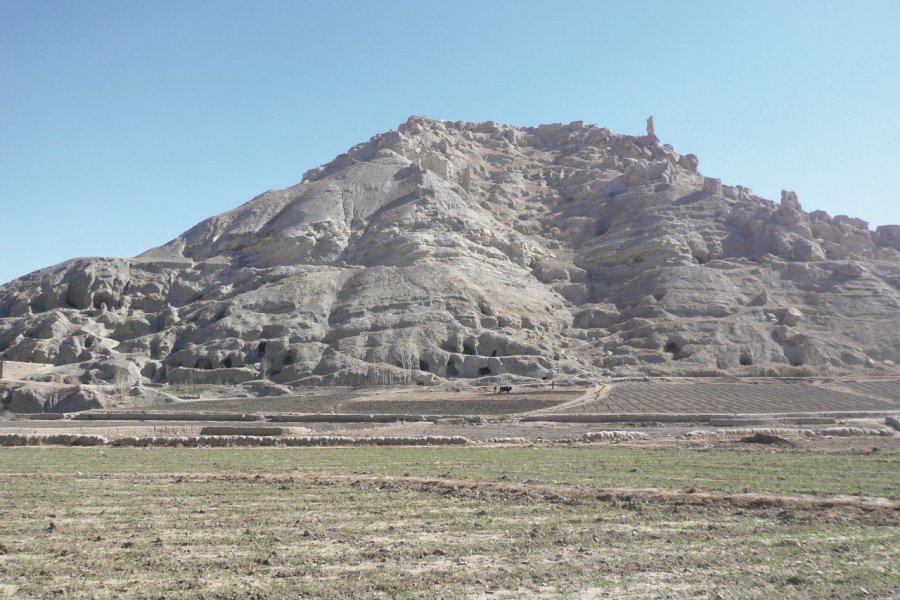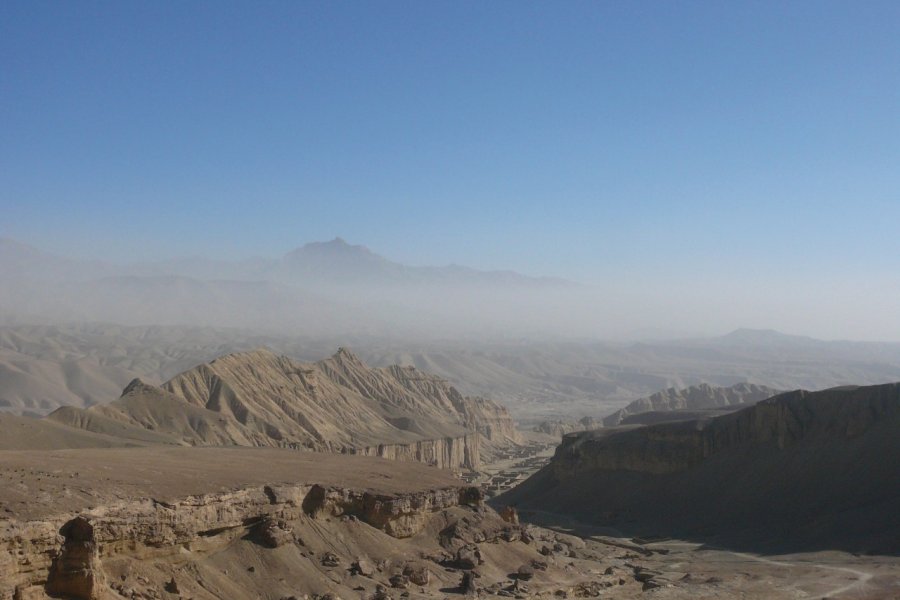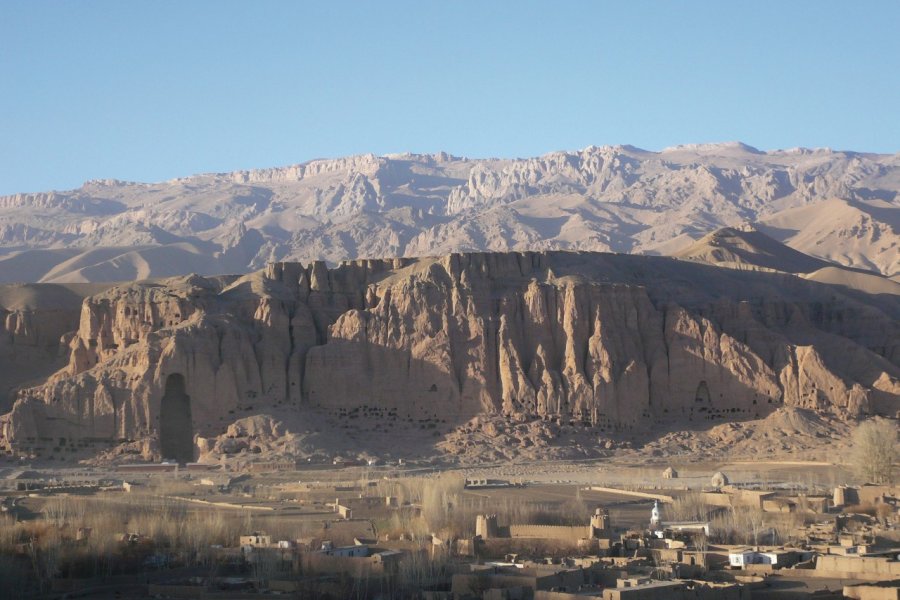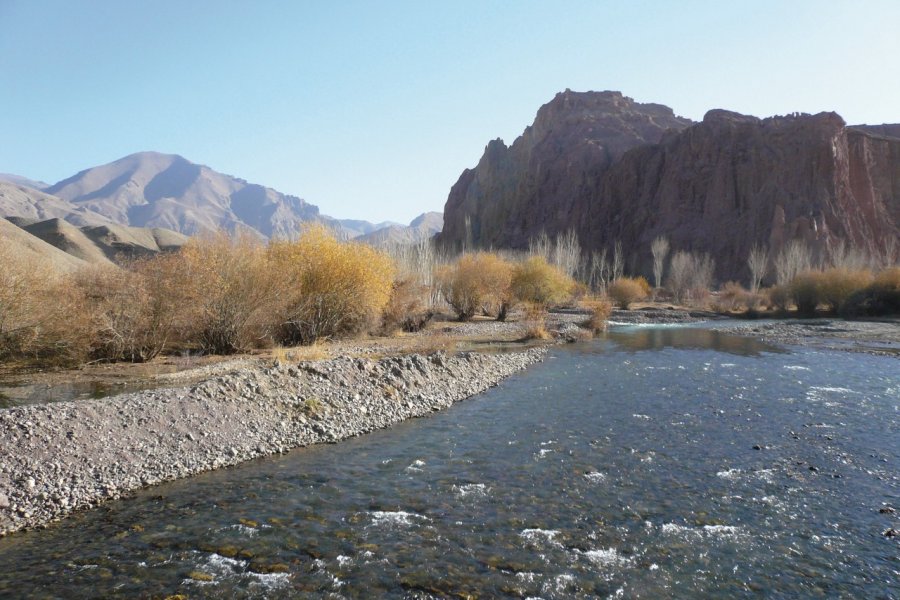Travel Guide Bamiyan
Find an accommodation
Advertising
At 2 500 m altitude and about 130 km from Kabul, Bamiyan is the Province's capital of the same name. In the heart of the Hindu Kush, this magnificent valley was one of the most remarkable achievements of man: the famous Buddhas. Even if they were destroyed by the Taliban, this serene valley with pastel colours always kept visitors. Those who are interested in art and history will find in the region several sites of Buddhist Periods (th centuries after J.-C.) and Islamic (th century after J.-C.).History. Placed on the old road connecting China to India, Bamiyan, a crossroads between Asia and the Western world, was an important strategic point. A central site of Central Asia, on the silk road, it is a city famous for its Buddhist antiquities. Under the reign of the Kouchans, which begins in the first century after J.-C., Bamiyan is a cultural and religious home whose remains still retain the remains. King Kanishka of the Kouchans dynasty promotes the expansion of Buddhism. It allows the beating of Buddha coins under the traits of a human being. Under his reign, many Buddhist monasteries are based in Afghanistan, as evidenced by the numerous archaeological discoveries. And what is called Greco-Buddhist art (mixing between Hellenistic traditions and the Buddhist influence of that time) blooms in Bamiyan. For several centuries, Bamiyan remained a major pilgrimage centre until the ninth century, when Mahmud de Ghazni conquered Afghan territory and imposed Islam in the valley. In the th century, the Shansabani made Bamiyan the capital of a kingdom stretching from Balkh to Badakhshan. But, in 1222, the Mongolian conquerors arrived until Bamiyan. Genghis Khan sends her grandson to the Shansabani, but they kill him. In retaliation, Genghis Khan ordered his soldiers to lay siege to the fortresses in Bamiyan. Everything is then destroyed and the inhabitants massacred. Bamiyan will never be fully involved in this destruction. In 1895-1896, Abdur Rahman Khan called for Bamiyan and Hazarajat to be controlled by the Afghan state. He then conducted a campaign of repression against Hazaras (inhabitants of Hazarajat), for heresy. The latter are dispossessed of their land, to the benefit of Pashtuns displaced on that occasion in the Hazarajat. The Hazaras then flee to Turkmenistan or neighbouring provinces. But the Pashtuns do not stay long in that province, where the climate is harsh and the land difficult to grow. During the war against Soviet occupation (1979-1989), the Hazaras were excluded from resistance parties because Shia. Hezb-e-Wahdat, an Iran-supported Mujahadeen party, reigns over Bamiyan and extends to Mazar-e-Sharif in the 1990 s. The Taliban regime, which came to power in 1996, renaître anti-hazaras sentiments. Mostly Shia, sometimes ismaili, unlike the Sunni Taliban, the Hazaras are the aimés of Afghanistan. Their religion differs, and their physical traits also. In general, they are relegated to the lowest of the scale and have the most unpleasant professions. Under the Taliban, Hazarajat no longer had access to international aid and the city of Bamiyan was taken by extremists in 1998.Today, the Hazarajat enjoys reconstruction programmes on the part of the international community. Many ngos have settled there. The Hazaras struggle to be more represented in Afghan politics, but they continue to suffer racism. Tensions between the various ethnic communities are far from having disappeared. One of the leading leaders in this community, Mustafa Kazimi, a member of the National Front, the main opposition party, died of a suicide attack in November 2007, causing a great deal of emotion in that community.
Suggested addresses Bamiyan
Weather at the moment
Advertising
Organize your trip with our partners Bamiyan
Transportation
Book your plane tickets
Car Rental
Boat rental
Accommodation & stays
Find a hotel
Holiday rental
Find your campsite
Tailor-made trip
Immersion travel
Services / On site
Activities & visits
Find a doctor
Bamiyan travel inspiration
Find unique Stay Offers with our Partners
Pictures and images Bamiyan
Other destinations nearby Bamiyan
100 km away








